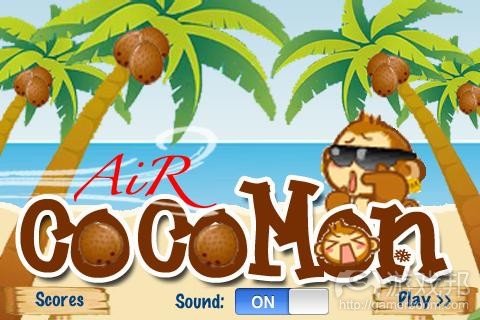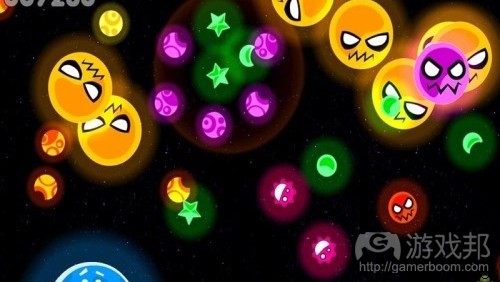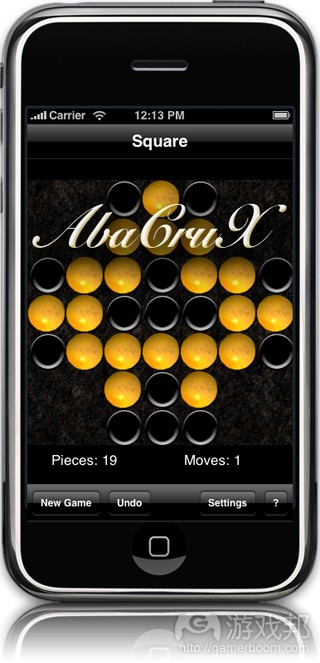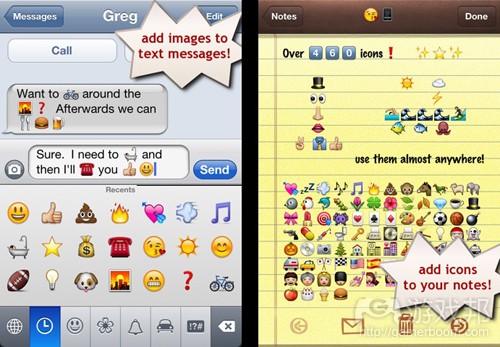列举助游戏本土化获得成功的7个步骤
作者:Laura DF
游戏开发商都知晓,本土化策略对开辟新市场和增加销售量极为重要。某些游戏的国际销售额在总盈利中所占比例将近50%。如果单纯从逻辑上考虑,英文版只占总市场的27%。众多iPhone应用开发商将本土化定为进一步增加国外销售额的战略计划。但问题不在于要不要这么做,而在于怎么做。开发商要如何将游戏本土化,才能使其在其他国家获得成功呢?每个游戏都是个故事,开发商应该帮助当地用户清楚理解故事以实现上述目标。
为良好地将游戏本土化,BESMART认为游戏开发商应该遵循以下7个步骤:预先准备指南和要求;延伸游戏背景;突出重点文化层面;明白质量是关键;支持创意性;为应用起个强大的名字;使用最好的翻译人员。以下是游戏邦编译的相关内容,文中以成功本土化的游戏开发商为例来探讨这7个步骤。
1、预先准备指南和要求
你们已经花了许多时间来制作和完善应用。然而,某些你觉得稀松平常的事物对本土化工作者来说可能并非如此,因为他们没玩过游戏或参与开发过程。避免信息交流繁琐或向本土化工作者施加时限压力,应确保刚开始便提供清晰的指南。
文字限制:在发布应用前,测试所有内容是否契合屏幕空间。如需减少文字数目,可寻求本土化工作者的帮助。
以现有游戏及其风格为基准:应用《Mozart》(游戏邦注:这款游戏帮助人们学会如何理解音乐)在开始翻译前向本土化工作人员提供相关网址链接http://ipad.rogame.com/pages/Mozart.html。点击页面上的图像可全屏显示,这使得查看界面元素更为方便。页面也表明游戏的基调无需过于正式。
格式:《Air CocoMon》等应用的开发商向本土化人员提供含有文字格式的指导,包括百分号和浮点数等,要求出现在原文中的任意此类符号需要在译文中保持原样。
BESMART建议:准备充分将使得本土化过程进展顺利,最终走向成功。
2、延伸游戏背景
提供尽量多的游戏背景信息,背景缺乏可能导致本土化效果低劣,最终面临失败。彻底描述本土化需要考虑在内的重点内容,以下是《Xachi》开发商提供的简短明了的背景信息,澄清他们的目标用户、译文风格、格式问题以及性别问题:“这是个为儿童和家长设计的iPhone游戏。语言必须清晰且为家长所认同。百分数用整数来表示。‘她’指游戏中名为‘Ika’的角色。‘玩家’指玩游戏的人。人们告诉角色射击和移动位置来控制屏幕上的Ika。”
以单词“received”为例,翻译成西班牙语时可能不像人们想的那般简单,需要考虑到性别和单复数问题。同个英语单词可能翻译成“recibido”(男性单数)、“recibidos”(男性复数)、“recibida”(女性单数)或“recibidas”(女性复数)。
截屏对查看整个屏幕显示情况以及纵观游戏内容也非常有用。
BESMART建议:本土化开始前花5分钟时间提供良好的背景信息,可能省下在翻译过程中花数个小时描述背景的时间。
3、突出重点文化层面
不同的国家和文化以不同的方式来传达相同的想法,即便他们的语言可能相同也不例外。保持语言一致性和文化敏感性是本土化的关键所在,参考专家意见确保词汇、图像、符号、音效和介绍都与你的目标用户文化习惯相符。
《Putterball》开发者Jeffrey Berthiaume为保证本土化恰当,他需要理解游戏中文字在相关语言和文化中交流及传达内容的方式的内行人士来协助。他向本土化人员解释称,某些俚语根据文化来转化成另一种语言是毫无意义的。因而,他向这些人提供PDF文件说明此类问题,使得本土化人员更容易理解整个游戏。他在文件中写道:“换句话说,我想看到的是你能编写出当地人的熟语。比如,‘mon petit chou’在法语中十分准确地表达出爱慕之情,但如果按其字面翻译成英语是‘my little cabbage’。所以,如果直译就无法表达出我真正想要传达的情感。”
游戏本土化不仅是对内容的翻译,需要对其他文化用户产生吸引力。招募评论员来审查本土化内容,可以确保将文化层面处理得细致周到。
BESMART建议:机器翻译和非本地译员根本无法保障文化上的准确性。你需要的不是翻译人员,而是本土化工作人员。
4、质量过硬是关键
本土化中不可出现语法、标点和拼写错误,在开始时为本土化人员提供最佳文稿,以确保能够获得最佳的本土化内容。
确保你雇佣的语言专家彻底理解游戏的主要概念,否则其工作便会出现偏差,你最终将会得到低质量的本土化内容。
比如,如果游戏的特色是某个角色使用了大量的双关语和滑稽之词等,如果本土化人员不理解这些笑话,翻译就有可能出现谬误。因而,最终用户在本土化版本中看到的不是个有趣的角色,而可能是个看似言辞毫无意义的东西。开发商需要提供设计文件、游戏架构、截屏以及现有游戏的链接等,因为这些都可能影响到本土化的质量。
以游戏《Buka》为例,关键在于让本土化工作者知道主角在学婴儿说话,有意犯下那些语法错误。玩家感觉她很可爱,像是个想与成人交流的孩子。如果开发商未强调这一点,本地化人员可能会想“天哪,全是语法错误”,而将时间浪费在修改错误上。这不仅使游戏目标丧失而产生极为糟糕的本土化版本,而且这种本土化也是完全失败的,用户也得不到满意的产品。
BESMART建议:如果你希望能使本土化产品的质量得到保证,就要提供高质量的指导和内容。
5、支持创意性
职业本土化人员知道这个过程不是翻译,而是重新制作。他们需要以原文为基础生成新内容,使其对目标用户产生吸引力,就像游戏由当地人制作一般。如果所有用户(游戏邦注:无论他们来自何处)都能在游戏中体验到乐趣,那么这就是个成功的本土化过程!
让本土化人员知道,你支持他们发挥创意性。
《Putterball》开发者鼓励他的本土化人员:“我想看到你能编写出当地人的熟语。”
《Abacrux》的本土化人员被告知:“在所需之处可以自由翻译,比如Roddy暗指角色苗条修长等。再次声明,处理这些内容时请自由发挥创意。虽然这很重要,但必须确保这些名称的长度越短越好,最长8-9个字。”
BESMART建议:职业游戏本土化人员知道如何形容最为恰当,信任他们才会助你超过竞争对手。
6、为应用取个强大的名字
调查游戏即将投放的商店或市场,避开某些营销问题。稀松平常或过于简单的名字可能让你的应用在市场中垫底。
说实话,如果游戏在不同的国家中有不同的名字,玩家会感到困惑。在所有语言中有着相同的名字,你可以让游戏品牌在世界范围内得到增强。
《Emoji Free》是款成功的本土化应用,每日新增用户1.5万人。应用开发商明确要求“Emoji Free”保留英文,但词语“free”单独出现时需要翻译。
BESMART建议:如果应用名是个警句或妙语,翻译倒是个不错的选择。
7、使用最好的翻译人员
任何会说目标语言的人可能都会认为自己可以替你翻译游戏。
职业翻译人员需要经过一定时间的学习。翻译需要特殊的技巧,但不是所有翻译人员都可以从事游戏本土化工作。只有职业本土化人员才会周全考虑上述所有内容。
考虑聘用审查人员也很重要,他们不仅可以校对文字找出拼写、语法和标点错误,而且还能处理风格、基调和形式等问题。只有本土化版本与文化保持一致性,才能够获得成功。
BESMART建议:招募职业本土化人员为你提供服务。(本文为游戏邦/gamerboom.com编译,如需转载请联系:游戏邦)
BESMART: 7 Tips for Successful Game Localization
Laura DF
Game developers understand the importance of localization when it comes to reach new markets and increase sales. Some games make almost 50% of their revenues from international sales. Pretty logical if we consider that English represents only a 27% segment of the market. A lot of iPhone App developers are turning to localization as a strategy to further increase their sales abroad. The question is not if, but how. How should developers localize their games for them to be successful in other countries? Each game tells a story. Developers must help localizers understand that story clearly to reach the objective.
BESMART gathers the seven steps a game developer should follow for great localization: Beforehand prepare instructions and requirements; Expand on context; Spotlight the importance of cultural aspects; Make certain quality is at the forefront; Allow for creativity; Research what makes a powerful App name; Take on-board the best translator. Let’s see the stories of successful games developers who got it right.
1. Beforehand prepare instructions and requirements
You have worked days on end to create and perfect your app. But something that seems obvious to you may not be so for the localizers who never played the game and were not involved in the development phase. Avoid extensive message exchanges and pressure of a fast approaching deadline, make sure you provide your localizers with clear instructions from the very beginning.
Let’s start on the right foot!
Character limitations: Before releasing your app, test that all content fits in the spaces provided on the screen and go back to your localizer if needed for help in shortening the text.
Link to existing game and tone/style: developers of Mozart App – a game to help learn to read music – provided their localizers before translation started with a link to the relevant website http://ipad.rogame.com/pages/Mozart.html. Images on that page can be clicked to display full size, which might come in handy for viewing interface elements. They also indicated that the tone needn ’t be too formal.
Formatting: other developers, this time Air CocoMon App informed localizers that game strings contained formatting characters, such as percentage symbols and floating number formatting, and that any such symbol that appears in the original text must remain as is in the translation.
BESMART tip: Good preparation leads to good performance, which in turn leads to success.
2. Expand on context
Provide as much contextual information as possible. Lack of context may lead to poor localization, and ultimately failure. Write a thorough description of main points that need be considered: read below a short yet great explanation related to context provided by developers for Xachi: Command in which they address who their public is, the tone the translation needs be in, formatting issue and gender issues: “This is an iPhone game intended for kids and adults. The language must all be clean and parent-friendly. %d is always replaced by whole number. “Her” always refers to the character in the game. Her name is Ika (ee-ka). “The Player” refers to the human playing the game. The human controls Ika on the screen by telling her where to shoot and where to walk.”
Take a simple word like “received” and have it translated in Spanish. It is not as straightforward to localize as one may think as it will raise gender and number issues. This very same English word can be translated as “recibido” (masculine singular), “recibidos” (masculine plural), “recibida” (feminine singular) or “recibidas” (feminine plural).
Screenshots are also useful to see the whole screens, an helicopter view of what the game is about.
BESMART tip: taking 5 min to provide good context at the start may save you hours of you describing context while translation is in progress.
3. Spotlight the importance of cultural aspects
Different countries and cultures express the same idea in different ways, even if they speak the same language. Maintaining linguistic coherence and cultural sensitivity is key to a successful international release: Ask your specialists to make sure that not only words, but also graphics, symbols, sounds and references are culturally appropriate for the audience you are targeting.
Jeffrey Berthiaume from Putterball game wanted a feeling of authenticity. He needed professionals who would understand what that text was trying to communicate and transpose it in a way that would be relevant for their language and culture. He explained to localizers that the text comprehended a lot of “slang” terms that would not make sense or be culturally localizable in another language.
He thus provided them with a PDF which made it easier to understand the entire game. He told localizers: “In other words, I would like the native language you create to have colloquialisms pertinent to a native speaker of your language. For example, in French the phrase “mon petit chou” would be used to express a term of endearment — and is 100% correct — even though literally translated into English it would read “my little cabbage”. If, instead, the obvious “mon amour” is used, the translation wouldn’t have the feeling of authenticity that I’m trying to achieve.”
Game localization goes beyond translating content; it requires to be appealing to other cultures. Calling upon the services of a reviewer that will cast a fresh eye on the localized text will give you the assurance that cultural aspects are handled carefully and adequately.
BESMART tip: machine translation and non-native translators will never be able to grasp cultural importance. Call upon the services of more than a translator, a localizer.
4. Make certain quality is at the forefront
Grammar, punctuation and spelling needs be error free. Provide your localizers with an optimal text from the start to receive an optimized localization.
Make sure the linguist you hire does thoroughly understand the main concept of the game. If he does not, his work will reflect that and you will receive a poor to fair localized text.
For instance, if the game features a character who uses a lot of goofy puns, jokes, etc. and the localizer does not understand these jokes, these will likely be translated incorrectly. Therefore, instead of ending up with a funny character in the localized versions, you’ll get a silly one that may appear to talk nonsensically. Developers need to provide design documentation, a build of the game, screenshots, link to the existing game, etc. as this all will contribute towards quality.
For Buka game, for example, it is crucial to let localizers know that the main character speaks “baby-talk” which could be grammatically wrong but intentional. Players should feel that she is cute, like a baby who is trying to communicate with adults. If developer had not highlighted this, localizers would have thought “Gosh, this is full of grammar mistakes” and would have wasted time trying to fix this. Not only would the end result have been disastrous as the aim of the game had been lost but localization would have been totally unsuccessful and you as a client dissatisfied.
BESMART tip: Provide quality if you expect quality in return
5-Allow for creativity
Professional localizers know that it’s not about translating, but “transcreating”: they need to create a new text, based on the original, that is appealing, funny for the target audience and reads as if written by a native. Localization will be successful if all users, no matter where they come from, can have fun with your game!
Let them know they’re allowed to do what they do best: creative writing.
Putterball developer encouraged his localizers “I would like the native language you create to have colloquialisms pertinent to a native speaker of your language.”
For Abacrux, localizers were told that: The string str_configuration Titles contained descriptive titles for different configurations. “These may be translated very freely where required. Roddy for example alludes to a slim cylinder, Spiro to a spiral. Again – feel free to be creative with these. It is important, however, to keep the length of these titles as short as possible – 8 – 9 characters maximum.”
BESMART tip: Professional game localizers will know what works in their language. Trust them and outsmart your competitors.
6. Research what makes a powerful App name
Research the store or market where your game will be listed to prevent any confusion or marketing mess. Avoid common names or too simplistic a name that will see your app end up at the bottom of the list.
To localize or not to localize: that is the question…Not!
Truth be said, players would be confused if games have different names in different countries. By having the same name in all languages, you consolidate the brand of your game, worldwide.
Emoji Free is synonymous with successful app and successful localization with 15,000 new users every day. Its developer explicitly asked to leave the phrase “Emoji Free” in English, but translate the word “free” if it appears by itself anywhere else.
BESMART tip: If the name bears a catch phrase, it’s however a clever idea to translate it.
7. Take on-board the best translator
Any speaker of the target language can say “I know Italian, I can translate your game”.
A professional translator has studied to become a translator. Translation requires special skills. However not every translator can localize a game. Only a professional localizer will take into account all the parameters here above-mentioned.
It is also important to consider contracting a reviewer who will do more than proofreading the text for typos, grammar and punctuation errors; this dedicated professional will address questions of style, tone, format, etc. as well as suggest alternative translations. Consistency will contribute to success.
Do you want a game that everybody enjoys? Do you want your game localization to be a success?
BESMART tip: Call upon the services of experts and contact the right professionals. (Source: Gamasutra)
上一篇:解析成功游戏共有的8大核心元素











































 闽公网安备35020302001549号
闽公网安备35020302001549号